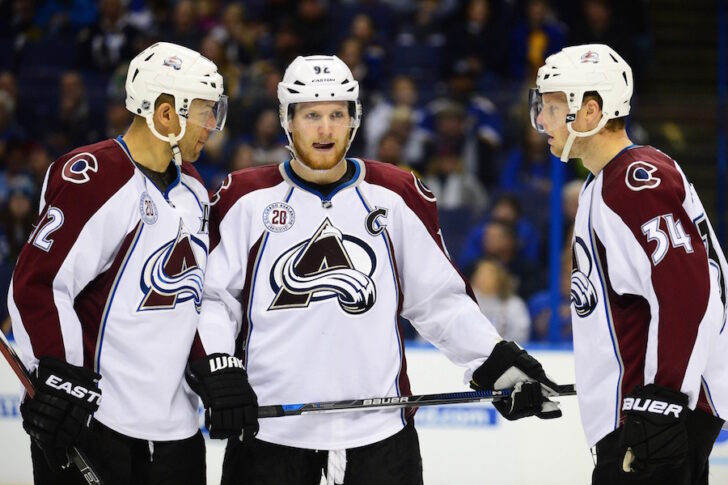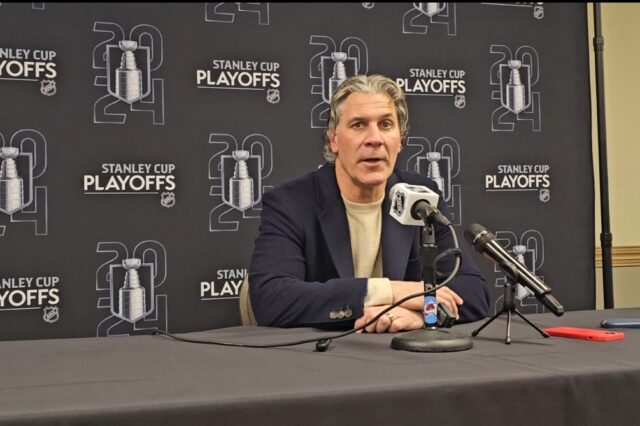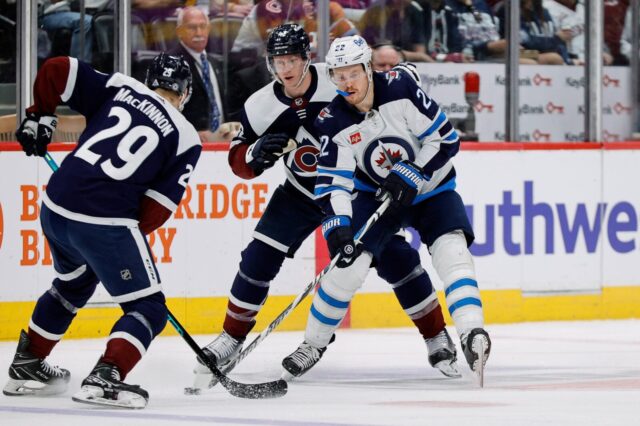Ask yourself, what was the biggest aberration in Colorado sports history?
Many memories may sway towards the Colorado Rockies late-season surge in 2007, affectionately referred to as “Rocktober.” Let me offer an alternative.
The 2013-14 Colorado Avalanche.
In the aforementioned season, the stout goaltending of Semyon Varlamov and a fast, opportunistic Avalanche offense led the team to 112 points and a Central Division crown. Avs fans were elated. The team was exciting to watch, and with youth on their side, it looked like they could be primed for a return to form reminiscent of the glory days.
On the surface, everything was great. The Avalanche had just won what was widely considered the toughest division in hockey. Statistics, however, told a different story.
They were out-possessed and out-shot. Only 47 percent of their shots were at goal over the season, which was the 25th in the league. The 2,049 shots they allowed was the fifth-most. With their speed, they didn’t need the puck for long, but was their style sustainable?
History would say no. In the time that has passed since, the Avalanche have failed to qualify for the playoffs in two straight campaigns and are well on their way to a third.
As the Avalanche attempted to get bigger in each of the past three offseasons, their team speed has decreased. Yet, their issues remained the same. If you don’t shoot, you don’t score. The law of averages has caught up to them.
Following a punishing, physical playoff series loss to the Wild in 2014, the Avalanche began bringing in big bodies. Guys like Jarome Iginla, Joe Colborne, Carl Soderberg, Francois Beauchemin and Blake Comeau. While they bulked up and slowed down with the additions on the periphery, they failed to address their issues effectively. Now, they have invested in a core, but around a flawed notion of what supporting pieces were needed to make them successful.
The Iginla and Soderberg signings specifically cost the team. Both are effective players in their own rights, but do not fit in systematically. Iginla has provided some goals (at least 20 in each of his first two seasons), but has come up short in terms of physicality and hasn’t had the impact from a leadership perspective that the Avalanche hoped for when they signed him. Soderberg has proven to be a decent distributor on set plays, but hasn’t been effective in the transition offense, perhaps slowing down the game a little too much.
Most damning however, is the fact that both have hefty cap hits which, after they locked up their “core,” handicap the team when it comes to making the other necessary improvements. This is the final year of Iginla’s deal, which carries a cap hit of $5.333 million. Soderberg’s deal runs through the 2019-20 season and has an average annual value of $4.75 million. This season, the Avalanche only have $637,961 in cap space (according to Cap Friendly). That’s not enough to make an impact addition.
Many people have blamed the core’s underperformance; I really don’t. Matt Duchene is a well worth $6 million annually. Though he is still working on putting it all together consistently, I don’t blame the $6.3 million investment in the potential of Nathan MacKinnon. The contracts of players like Gabriel Landeskog and Semyon Varlamov may seem a tad high in retrospect, but are not out of line with what the market dictated at the time. Instead, the issue isn’t with the core that the team locked up, nor the amount for which they did so. Instead, it is how they spent the money they had left.
This makes things tough on general manager Joe Sakic. He may indeed need to move one of the core (consisting of the aforementioned players, Tyson Barrie and Erik Johnson), even if they aren’t to blame, just to get some affordable young assets for the future.
Things aren’t quite as bleak as they seem however. Next offseason, the Avalanche will have $20 million come off the books. If invested properly, coupled with exciting prospects such as Mikko Rantanen, Tyson Jost, A.J. Greer and J.T. Compher, they could have a bright future. Things are dark right now, but it’s always darkest before the dawn. If the team plays their cards right, that dawn may come sooner that you would think and the 2013-14 run to the playoffs may seem less of an aberration.



